A Mud School That Feels Like Home for 210 Tribal Kids Is Falling Apart. You Can Help Save It
On the outskirts of Bhopal in Neelbad, stands a one-of-a-kind school made entirely of mud. This Mitti Ka Ghar allows children (from the neighbouring tribal communities) to learn in a surrounding that echoes the earthy notes of their homes. This was a crucial detail, architect Revathi Kamath believed, when she set out to build the school pro bono in 2012. Kamath is no more, but her ethos lives on in the specifics.
Since it came to life in 2017, Mitti Ka Ghar has focused on welcoming children from de-notified tribal communities — the Pardhi and Gondi tribes specifically. To better understand the weight their work carries, we revisit the archives.
Prior to independence, certain communities were earmarked for being ‘criminal’. Post independence, the Criminal Tribes Act was repealed in 1952, which decriminalised — or de-notified — these communities. But they haven’t been able to shake off the stigma.
Scattered around the bastis (slums) of Bhopal — and across pockets of the Indian hinterland — their hamlets stretching far into the forest, these tribes live far removed from the modernities of urban life; they are strangers to the concept of education.
But in Mitti Ka Ghar, they’ve found refuge and hope.
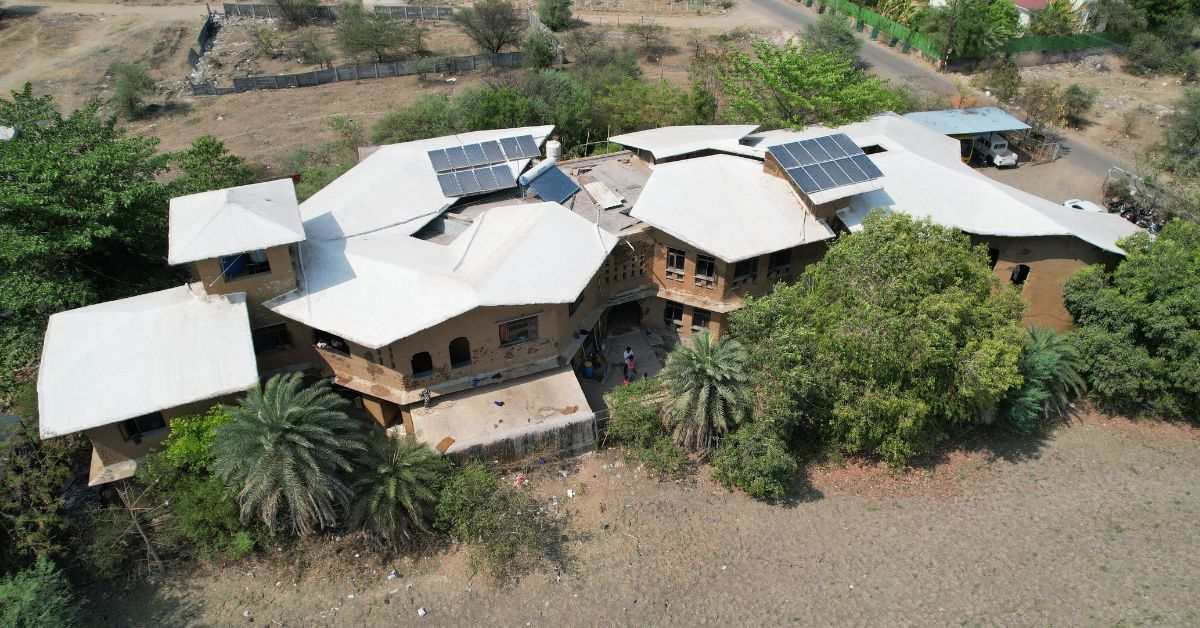 Mitti Ka Ghar is a school built out of mud in Bhopal that aims to democratise education for children from tribal communities
Mitti Ka Ghar is a school built out of mud in Bhopal that aims to democratise education for children from tribal communities
 The Mitti Ka Ghar restoration process will take four months and a budget of over 40 lakhs
The Mitti Ka Ghar restoration process will take four months and a budget of over 40 lakhs
The mud school is an endeavour by Bhopal-based ‘NGO Muskaan’ that focuses its energies on informal urban settlements and villages, particularly de-notified tribes.
Here, education becomes a tool for change.
Sounds brilliant, right? But, there’s a problem. Muskaan is uncertain how much longer they will be able to continue. The Mitti Ka Ghar, you see, needs restoration. And that needs you.
As you read this, a team of architects is hard at work, racing against time to make the architecture structurally sound for the upcoming academic year. Your support can speed this up.
Local wisdom and architectural brilliance
Brajesh (45) has a way with math. Having taught the subject for over a decade now, it’s second nature. Brajesh is well aware of where his skills will earn him a corner office. But, he “never wants to leave” Mitti Ka Ghar. Having grown up in a mud home, a feeling of nostalgia has tailed him closely ever since he first set foot here. It’s the same for the children. The school references familiar environs.
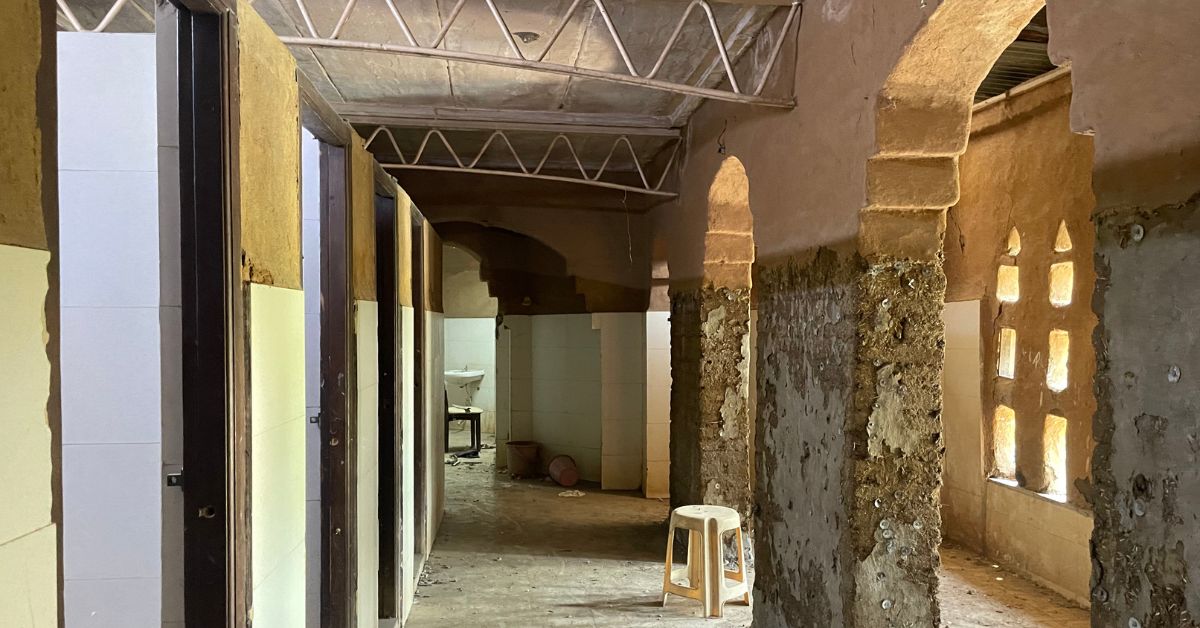 Mitti Ka Ghar is built using Adobe bricks, which are sun-dried bricks made from a mixture of earth, water, and a binding material like straw
Mitti Ka Ghar is built using Adobe bricks, which are sun-dried bricks made from a mixture of earth, water, and a binding material like straw
 The restoration is being done using red bricks and lime, also sustainable options, but are more immune to moisture
The restoration is being done using red bricks and lime, also sustainable options, but are more immune to moisture
Nostalgia is intertwined into the walls, in the roof, in the ground. Beyond its perfunctory role, the school is now just an extension of home.
“Sometimes we’d take the children to a theatre to watch a play; the tiles, the cement and the modern look of the place made them uncomfortable. But at Mitti Ka Ghar, they feel safe, they don’t hesitate. The mud is responsible for this,” Brajesh shares.
Reasoning the choice of material, Kamath had once shared in an interview, “There is a certain given which is the envelope of the site; you have the orientation; you have the sun[light]; you have the breeze; you have all the natural elements. You imagine all five elements balancing themselves within each space. This building looks at traditional material in a new way.”
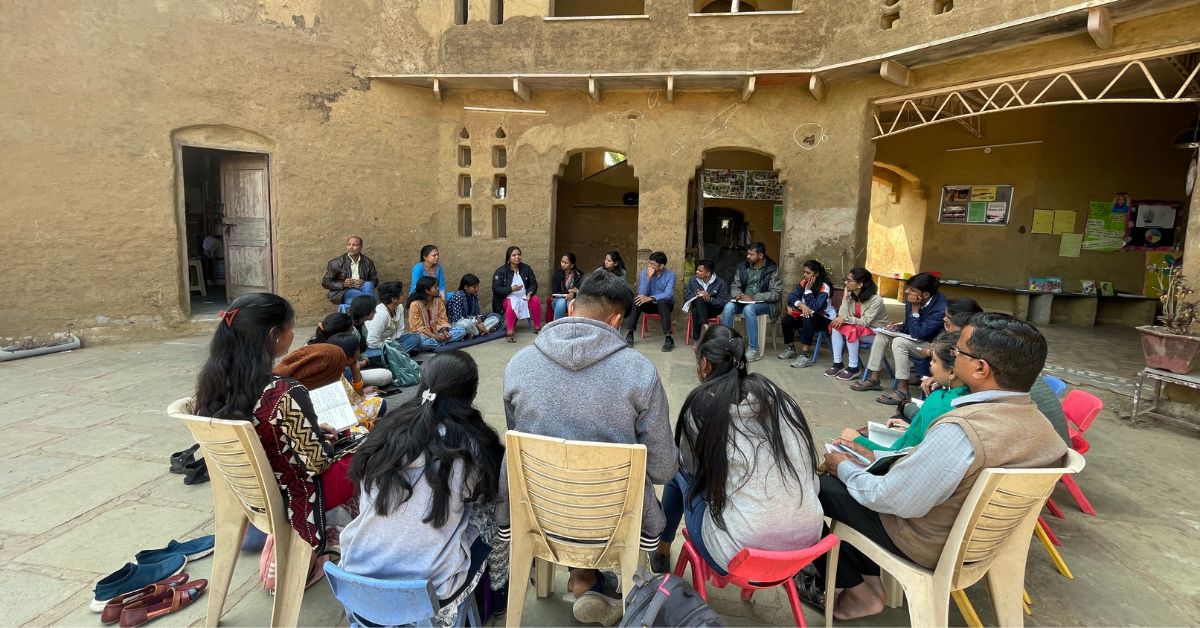 The team includes volunteers, including architects, designers, conservationists, structural engineers, and contractors, who have formulated a plan of action for the repair of Mitti Ka Ghar
The team includes volunteers, including architects, designers, conservationists, structural engineers, and contractors, who have formulated a plan of action for the repair of Mitti Ka Ghar
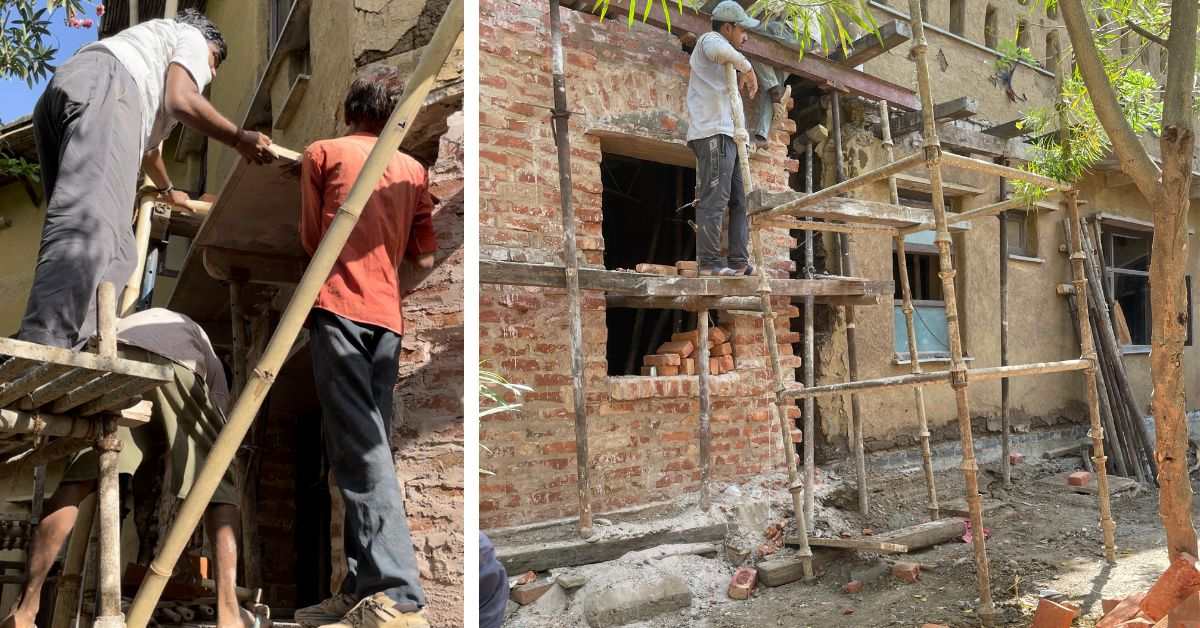 You can help bring Mitti Ka Ghar back to its former glory by supporting the restoration
You can help bring Mitti Ka Ghar back to its former glory by supporting the restoration
The building is a cross-fertilisation of ideas and aesthetics, and makes a compelling case for how mud can be beautiful. As Kamath had pointed out, “We don’t have to use expensive acrylic paints (the building is plastered with mud, rendering it a beautiful shade of copper); all the wood used is recycled from old buildings; the labour inputs increase. At every point in the system, we have methods by which the involvement of people brings value to the building.”
And while learning in this womb of ecology, children grasp better. But if this is to continue, your donation could help.
So, what can you do?
Culture and background have never been a talent differentiator at Mitti Ka Ghar.
Pushpa Yadav (19) figured this out early on. On her first day, she was intimidated. Relegated to a life on the streets after her parents had passed away, Pushpa did not know the alphabet or how to count. But at Mitti Ka Ghar, she learnt an important life lesson — there’s always a first time. Now, Pushpa coaches young girls in Frisbee. “I love teaching girls sports. It’s unfair that they do not have the same opportunities as boys; girls always have to think twice before being allowed to do something.”
But Pushpa’s biggest worry is child marriage.
“We want to stop this from happening. At least through education and sports, I feel we can help girls escape early marriages and other unhappy futures,” Pushpa adds. And she believes that Mitti Ka Ghar will edify this hope for them.
Architect Sourabh Gujar (32) shares this belief. He is among the team of people restoring the school to its former glory.
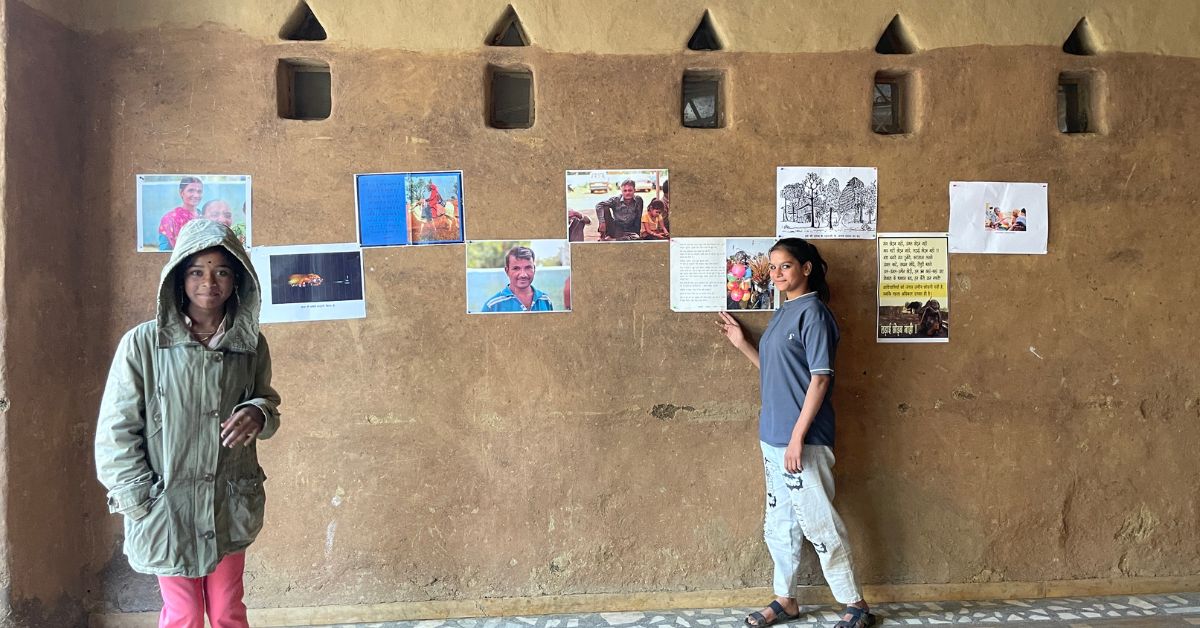 Learning in a school that’s built out of mud helps children feel comfortable, as it mimics their home settings
Learning in a school that’s built out of mud helps children feel comfortable, as it mimics their home settings
 The architects are also restoring the plinth around the building to keep water at bay
The architects are also restoring the plinth around the building to keep water at bay
In the years since it started, Mitti Ka Ghar has braved bouts of unpredictable weather, but the usage of Adobe bricks (sun-dried bricks made from a mixture of earth, water, and a binding material like straw) in areas that have frequent water exposure is where the problem lies. Architect Sourabh, who has been engaged in natural building for over seven years, explains, “The bricks have performed well in other areas of the building, but in the toilet area, because of constant water exposure, their structural strength reduced and the wall collapsed.”
The problem is that moisture intake is compounded by the region’s black cotton soil, which tends to retain moisture.
Sourabh and his team are now attempting to restore the fallen structure using red brick and lime — still a sustainable option — but one more resistant to moisture. They are also restoring the plinth around the building to keep water at bay. Architecturally, this hasn’t been the easiest process, architect Shaista Perveen, part of the restoration team, explains. “When we work on traditional structures, we need to see to it that there is an integration between existing traditional material that has been used.”
 The architects have formulated a plan of action using the original architectural and structural drawings from the Kamath Design Studio Archives to help understand the way the building was constructed
The architects have formulated a plan of action using the original architectural and structural drawings from the Kamath Design Studio Archives to help understand the way the building was constructed
In this case, no one wanted to interrupt the beautiful tapestry of mud. Architect Ayodh Kamath, Revathi’s son adds, “The team of volunteers, including architects, designers, conservationists, structural engineers, and contractors, who have formulated a plan of action for its repair are using the original architectural and structural drawings from the Kamath Design Studio Archives to help understand the way the building was constructed and ensure that the repairs did not compromise Revathi Kamath’s vision of the building.”
As Shaista explains, in this case, it is not the rains that pose a problem, but the water coming from the ground. Tackling the solution requires a vetting of the foundation, which is where the expense lies.
The work will take four months to complete, but funding can speed it up significantly. “The school is large; the built-up area is around 7,500 sq ft. The entire cost of the project will go up to Rs 45 lakh, with the first phase amounting to Rs 25 lakh,” Sourabh shares.
Currently, 210 students study at Muskaan. This project will help them continue their education.
Where success isn’t measured in a single parameter
At Mitti Ka Ghar, the thrum of the outside world melts away.
Here, the formula is bent, enabling children to study skills and concepts that will not just hold in good stead for the upcoming exams, but also for life. As Shivani Taneja, founder of Muskaan, shares, in 1997, when she started out, intending to enrol marginalised children in the formal schooling system, she realised the need for a slightly different approach.
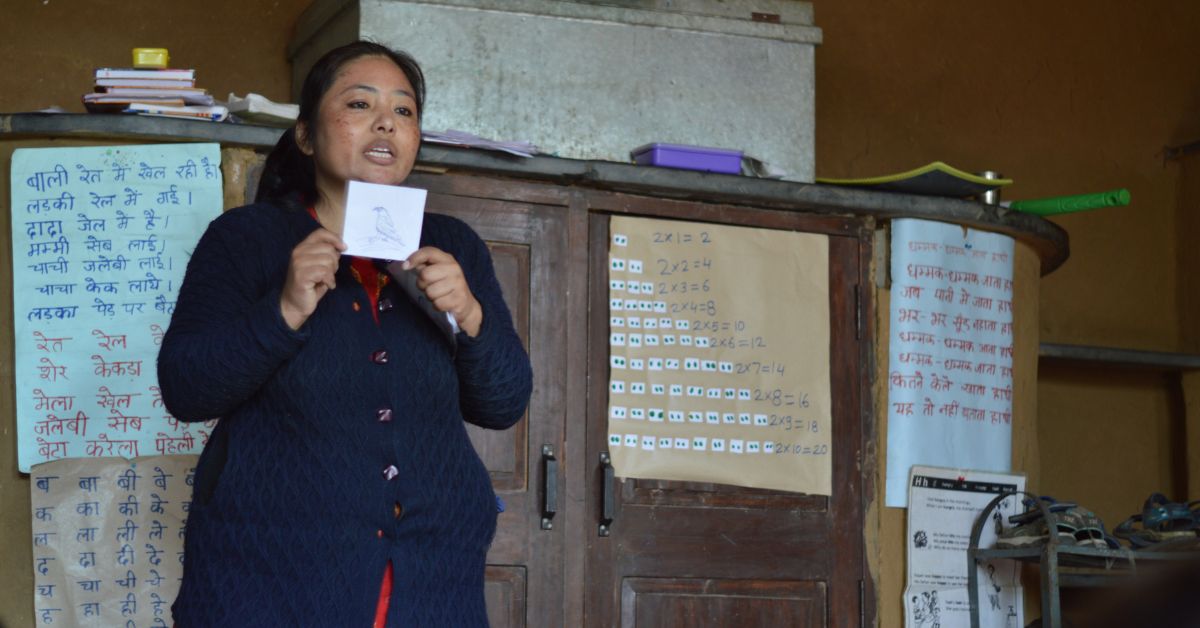 At Mitti Ka Ghar, along with education, there is a focus on health, sanitation, and malnutrition concerns as well
At Mitti Ka Ghar, along with education, there is a focus on health, sanitation, and malnutrition concerns as well
Formal schooling, bags, and timetables made these children “quiet and subservient”. It underscored the need for a schooling experience based on social and economic standing. The children’s backgrounds — children from the Pardhi and Gondi de-notified tribes often grow up in traumatic settings — mean education isn’t the only gap that needs to be addressed. There are health, sanitation, and malnutrition concerns as well.
Following a city-wide mapping of informal settlements so that targeted interventions could step in, Muskaan started the Jeevan Shiksha Pahal, an experimental school functioning from the Mitti Ka Ghar. It became a nurturing space for children of the Gondi, Pardhi, Kanjar, Dalit and Muslim communities. The focus was on creating an environment conducive to the mental and physical development of a child.
The mud architecture is a step towards helping them feel more at ease. As Shivani explains, “As a school, we believe in environmentally friendly values. It’s a traditional way of living life; people feel at home here. While working with vulnerable communities, we understood that the present concept of development wouldn’t work for them. And this is where the idea of mud came from.”
As for the architects currently working on the project, they see potential in it. As architect Sourabh reasons, “Restoring the building will restore people’s faith in mud architecture and sustainable construction.”
Here at Muskaan, a story is unfolding, one shaped by nature.
You can help write it. Donate here.
Edited by Khushi Arora, All pictures courtesy NGO Muskaan
News